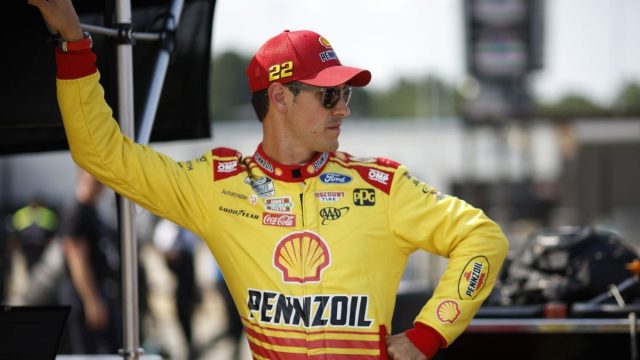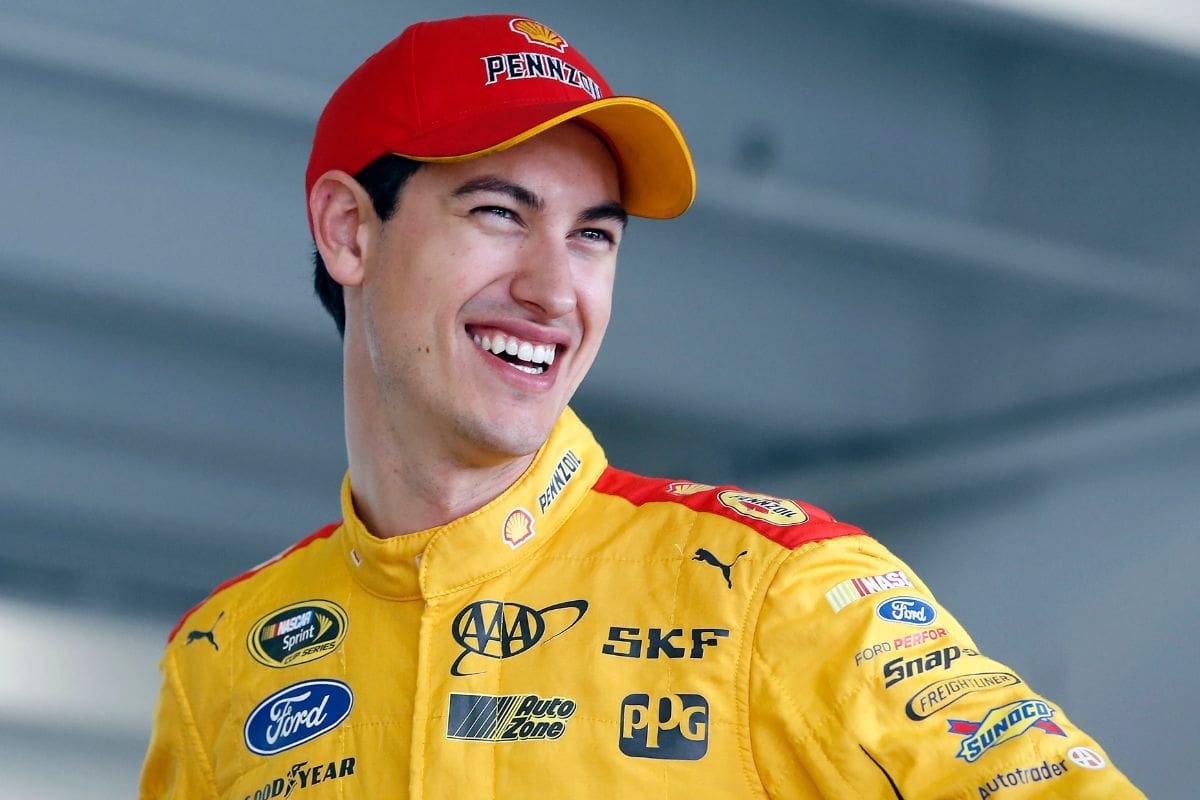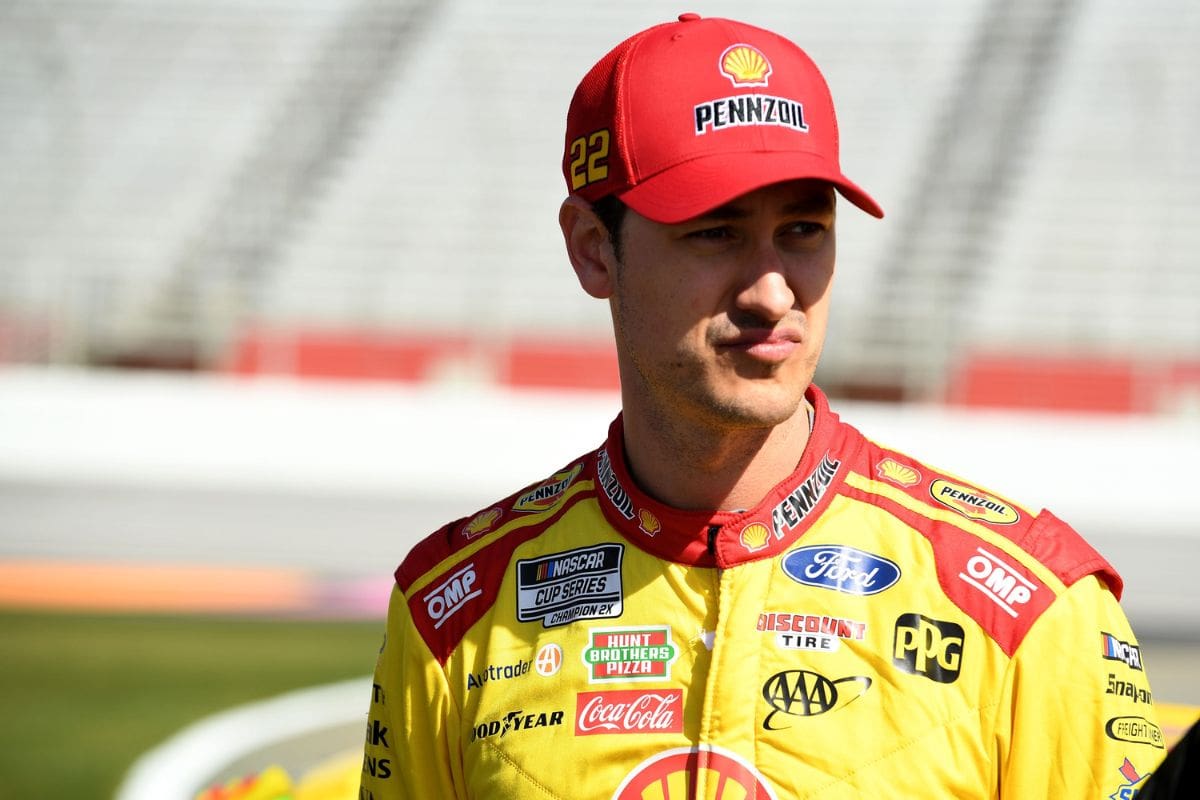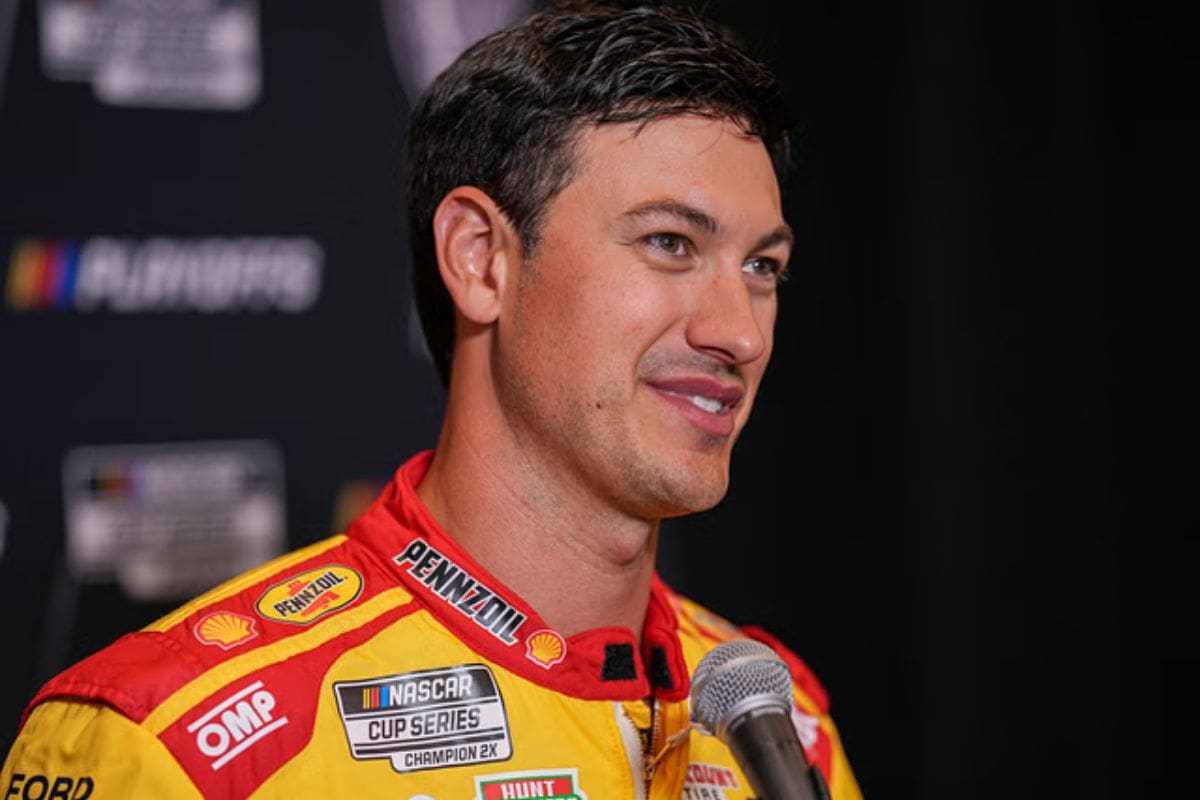Joey Logano’s Watkins Glen Reality Check: Joey Logano‘s recent remarks regarding the challenges at Watkins Glen tells a critical examination of the efficacy of NASCAR’s driver perks. By asserting that track modifications and new tire compounds may not substantially alter performance, Logano suggests a shift in how adaptability and strategy might outweigh traditional advantages like extra practice sessions. This perspective invites further reflection on the broader implications for driver performance and competitive equity in NASCAR. As the series evolves, are these perceived perks truly beneficial, or are they merely an illusion in the face of a rapidly changing racing landscape?
Key Highlights
- Logano perceives Watkins Glen as less challenging than other road courses, suggesting the driver perks may not significantly enhance competitive advantage.
- The new tire compound’s rapid wear-off influences strategy, emphasizing adaptability over driver perks for success.
- Logano’s skepticism about the value of extra practice sessions indicates potential overrated nature of these so-called advantages.
- His limited success at Watkins Glen questions the effectiveness of driver perks in overcoming track complexities.
- A focus on consistent performance and strategy may outweigh on driver advantages in achieving playoff goals.
Watkins Glen International: A New Chapter in the Playoffs
Watkins Glen International is poised to mark a noteworthy milestone in the NASCAR playoffs as it hosts its inaugural post-season race in the Round of 16. This historic event not only raises the importance of the track but also introduces an array of modifications aimed at enhancing the competitive landscape.
With the adjustments to the rumble strips off turn one and the curbing at the bus stop, NASCAR is clearly focusing on optimizing driver performance while maintaining safety standards.
The introduction of a new tire compound, characterized by a faster wear-off rate, contributes another layer of complexity for teams and drivers. This compound will likely influence race strategy, as teams must navigate the balance between speed and durability. Consequently, the changes at Watkins Glen promise to heighten the intensity of competition, as drivers will be forced to adapt quickly to the evolving track dynamics.
Moreover, the allocation of extra practice time highlights NASCAR’s commitment to fostering familiarity with the new conditions, yet it raises questions surrounding the actual efficacy of such measures. As seen in previous races, adaptability remains a vital skill, and it is uncertain whether extra practice can appreciably mitigate the inherent uncertainties introduced by the track modifications.
Joey Logano’s View on Watkins Glen and Extra Practice
Joey Logano’s perspective on the upcoming race at Watkins Glen reflects a understanding of both the track’s challenges and the tactical implications of the new tire compound. Unlike many competitors, Logano does not perceive Watkins Glen as an inherently challenging venue. Instead, he recognizes the evolving dynamics introduced by the three-second wear-off period of the new tire compound. This adjustment is expected to greatly impact race strategy, potentially increasing opportunities for overtaking as drivers adapt to the shifting tire performance throughout the event.
The increased tire fall-off, as noted by Goodyear’s director of racing, Greg Stucker, suggests that drivers will experience varying levels of grip, leading to a more fluid race with numerous comers and goers. This unpredictability necessitates meticulous pit stop planning, as teams must balance tire management with track position.
“That, of course, can mean more passing throughout the race. It’s always tricky on road courses as drivers take advantage of a limited number of ‘passing zones,’ so the increased fall-off should lead to more comers and goers as some drivers manage their tires and gain on the field as the runs go on.”-(GREG STUCKER)
Logano acknowledges the potential for excitement and strategy this change brings, but he remains skeptical about the advantages of the extra practice sessions. In a recent pre-race press conference, Logano stated, “It’s just as beneficial for the rest of the teams out there,” tells that while more practice laps may be enjoyable, they do not confer a distinct competitive edge.
“I mean it is it’s just as beneficial for the rest of the teams out there. So you don’t gain an advantage, but I think these days I mean anytime you can make more laps it’s just kind of nice. Like as a Race Car Driver these days you don’t get to make many laps anymore. So it’ will be a little bit of fun.”
“And you know this isn’t the most technical road course that we have um just because there’s not a whole bunch of Corners really compared to some of the others.”-(LOGANO)
His insights reveal a nuanced understanding of the interplay between preparation and performance on race day, showing the importance of adaptability in the complexities introduced by the new tire compound at Watkins Glen. As he notes, the opportunity for extra laps is a welcome respite in a sport that often limits practice time.
Logano’s Confidence and Record at Watkins Glen
A notable aspect of Logano’s approach to the Watkins Glen race is his confidence, rooted in a belief that the track’s relative simplicity diminishes the need for extensive practice. He characterizes Watkins Glen as less intricate than other road courses, noting that it features fewer corners, which ostensibly makes it easier to navigate.
“The cars will want something different from a setup perspective and they’re also changing the tire, too. It sounds like there will be a lot more tire wear, so there are a lot of unknowns for sure.”-(LOGANO)
However, this confidence is juxtaposed with the reality of his historical performance at the venue, reflecting a more nuanced perspective.
Logano’s past experiences at Watkins Glen reveal several critical points:
- Limited Success: Over the last five races at Watkins Glen, he has secured only one top-5 finish, raising questions about his efficacy on this particular track.
- Changing Dynamics: Despite his dismissal of the track’s challenges, Logano acknowledges the unpredictability introduced by new tire wear and setup changes, suggesting that the race could deviate from his expectations.
- Current Standing: Locked into the playoffs, Logano’s primary objective is to accumulate playoff points, which makes a solid finish at Watkins Glen crucial for his overall strategy.
- Potential for Improvement: While he may not need a win, achieving a strong result could enhance his confidence and performance in subsequent races.
Logano’s Championship Chances and Past Performance
Logano’s performance at Watkins Glen serves as a microcosm of his broader championship aspirations, particularly in view of his inconsistent playoff history. Despite being a seasoned competitor, his unexpected exit from the playoffs in the opening round last year raises questions about his ability to maintain consistent high-level performance.
Historically, Logano has exhibited a knack for capitalizing on opportunities, having reached the Championship Four five times since 2014. Remarkably, all of these appearances have occurred in even-numbered years, presenting a curious yet compelling narrative surrounding his championship potential.
Logano’s candid acknowledgment of the odd-year anomaly—where he has struggled to replicate his even-year success—underscores a critical aspect of his mindset. His aspiration to “win a lot every year” reflects a determined attitude that transcends the cyclical nature of his playoff achievements.
“I’ve been told that a lot here recently. To be honest with you I don’t know what it is. I don’t know. Even is good though. I don’t know why it ends up being like that. I’d really like to just win a lot every year. It’s really the goal. If I can fix the odd year thing, I would. I just don’t know what it is. It doesn’t make you look forward to next year too much. We’ll break the trend next year.”-(LOGANO)
This year, he aims to break the trend that has cast a shadow over his odd-year performances. However, the question remains: can Logano adapt effectively within the evolving dynamics of NASCAR?
His ability to perform consistently across the board, regardless of the year, will be pivotal in shaping his championship narrative. As he navigates the current season, the stakes are raised; a return to form could either reaffirm his status as a title contender or further entrench the narrative of inconsistency that has plagued his odd-year pursuits.
Logano Reflects on a Difficult Regular Season
This season’s finale highlighted notable challenges for the #22 driver, as Logano’s performance fell short of expectations, yielding only one victory alongside four top-5 finishes and eight top-10s. This dismal record marks one of the most difficult regular seasons in Logano’s career, casting doubt on his prospects for the championship.
“If you can survive long enough and we talked about how close the field is these days you have a couple good races and boom you’re in the next round. You have another good race where you win one and next thing you know you’re in a Championship Four and you’ve got a shot to win this whole thing. So it doesn’t take much to be to go from mediocre through the regular season to being a threat to win the championship.”-(LOGANO)
However, the seasoned driver maintains a resilient outlook, attributing the unpredictability of NASCAR as a significant factor in his potential resurgence.
Logano articulated his belief in the game’s uncertainties, emphasizing that success can be achieved with a few favorable races. He outlined several key aspects that can shift the momentum in NASCAR:
- Survival: Remaining competitive throughout the season is essential.
- Consistency: Securing top finishes lays the groundwork for playoff eligibility.
- Race Strategy: Smart decision-making during races can capitalize on unexpected opportunities.
- Momentum: A single victory can dramatically change a driver’s path, propelling them into contention.
Despite a lackluster regular season, Logano’s philosophy emphasizes that transformation is always possible within the sport. He remains optimistic about the playoffs, suggesting that a string of good performances could quickly raise him to championship contention.
As the season progresses, the question remains: can Logano convert his belief into results? His expedition will be closely scrutinized, as fans and analysts alike ponder the implications of his regular season on his championship aspirations.
News in Brief: Joey Logano’s Watkins Glen Reality Check
Joey Logano’s perspective on Watkins Glen shows a broader debate regarding the significance of driver perks in NASCAR. His emphasis on adaptability and strategy suggests that the impact of track modifications and supplementary practice sessions may be overstated. Logano’s limited success at Watkins Glen, coupled with his focus on consistency, showcases the complexities of competitive performance in the sport, prompting a reevaluation of conventional wisdom surrounding driver advantages in the constantly changing NASCAR landscape.
ALSO READ: What Are Joey Logano’s Odds of Winning the Championship Again? Dale Jr. Shares His Thoughts



